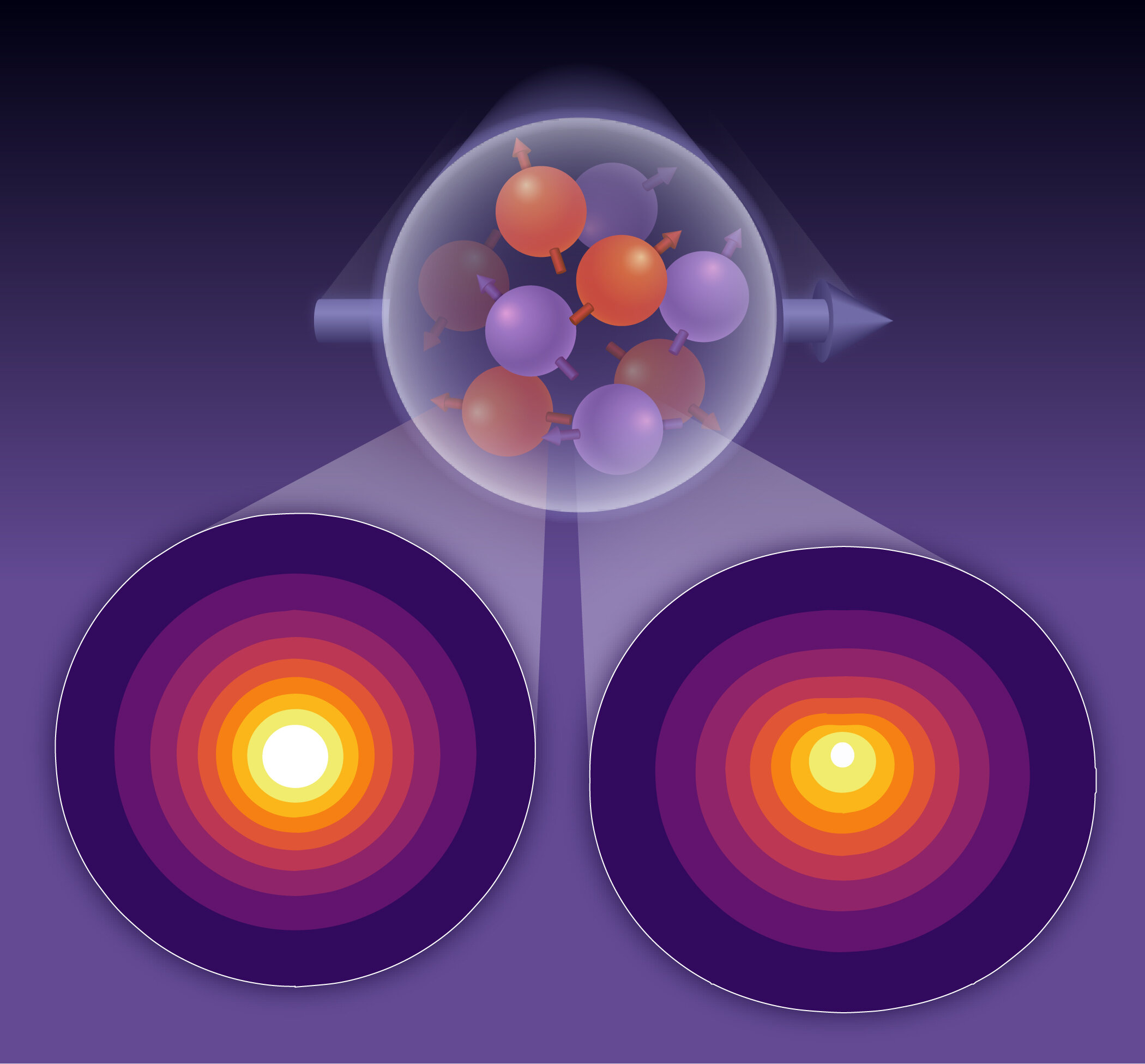This graphic visually represents a proton moving at near-light speed towards the observer, with its spin aligned horizontally. Two concentric circle views at the bottom display the spatial distributions of momentum for up quarks (left) and down quarks (right) within the proton. The colors indicate high (white) and low (violet) levels. The study, conducted by a collaboration of nuclear theorists from various institutions, including Brookhaven National Laboratory, Argonne National Laboratory, Temple University, Adam Mickiewicz University of Poland, and the University of Bonn, Germany, utilized supercomputers to predict the distribution of charges, momentum, and other properties of up and down quarks within protons. The results were published in Physical Review D and revealed distinct differences between the characteristics of up and down quarks. According to Swagato Mukherjee, a co-author of the paper, this research is significant as it provides a high-resolution map of quarks within a proton, indicating that up and down quarks may contribute differently to the fundamental properties and structure of the proton, such as its internal energy and spin. Martha Constantinou, another co-author, mentions that these calculations are crucial for interpreting data from nuclear physics experiments that explore the distribution of quarks and gluons within the proton and overall properties. Such experiments are currently taking place at the Continuous Electron Beam Accelerator Facility (CEBAF), and future experiments are planned at the Electron-Ion Collider (EIC) at Brookhaven Lab. These experiments involve high-energy electrons emitting virtual particles of light that scatter off the proton and alter its momentum without breaking it apart. By studying how the proton’s momentum changes in response to these scatterings, scientists gain insight into the quarks and gluons, similar to an X-ray imaging technique. The researchers developed a new theoretical approach to access the Generalized Parton Distribution (GPD) of the proton, which describes the distribution of energy-momentum and other characteristics of quarks and gluons within the proton. This allows scientists to understand the inner workings of the proton and potentially apply this knowledge in new ways. The new method enabled the team to simulate a higher number of momentum transfer values within a single computation, significantly enhancing the resolution of the imaging. Additionally, by utilizing lattice QCD, a technique developed at Brookhaven Lab, the researchers could tackle the complex equations involved in describing quarks and their interactions. The lattice QCD method involves placing quarks on a 4D spacetime lattice and using supercomputers to solve the equations that govern their interactions. This technique allowed the scientists to capture separate images of up and down quarks and calculate their individual GPDs. The team mapped out the energy-momentum and charge distributions of up and down quarks within protons and also examined their distributions in polarized protons to investigate their contributions to the proton’s spin. The results indicated that the momentum distribution of down quarks is particularly asymmetric and distorted within a polarized proton compared to up quarks, suggesting that the different contributions of up and down quarks to the proton’s spin arise from their distinct spatial distributions. The calculations also showed that up and down quarks alone account for less than 70% of the proton’s spin, implying that gluons contribute significantly. These findings align with experimental results from Brookhaven Lab’s Relativistic Heavy Ion Collider (RHIC) and will support future experiments at the EIC, which aim to delve deeper into understanding the gluon contribution to proton spin. According to Joshua Miller, carrying out his Ph.D. research at Temple University, combining theory and experiment is crucial to obtaining a complete understanding of the proton. Overall, these theoretical predictions provide valuable information for experimental comparison and data interpretation, assisting scientists in unraveling the mysteries of the proton’s internal structure and the forces at work within the atomic nucleus.
Denial of responsibility! SamacharCentrl is an automatic aggregator of Global media. In each content, the hyperlink to the primary source is specified. All trademarks belong to their rightful owners, and all materials to their authors. For any complaint, please reach us at – [email protected]. We will take necessary action within 24 hours.

Shambhu Kumar is a science communicator, making complex scientific topics accessible to all. His articles explore breakthroughs in various scientific disciplines, from space exploration to cutting-edge research.


